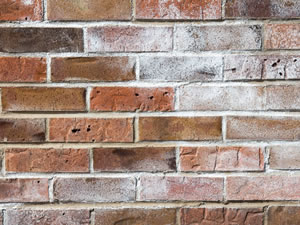April 20, 2022

THE DANGERS OF PRESSURE WASHING STONE AND MASONRY SURFACES
Are you a property owner or manager looking for a cleaning solution for dirty concrete and sidewalks, oily driveways, and other sullied surfaces? You may have considered pressure washing, which is a fast and easy way to clean such surfaces, but be warned, when it comes to stone and masonry, pressure washing can cause damage. Anyone can purchase a pressure washer and claim to be qualified to clean exterior stone and masonry. One should always opt to consult with a professional stone restoration contractor for safe, lasting results.Over-saturation Can Cause Efflorescence
Pressure washing can remove the natural protective patina of stone and masonry surfaces. It will also remove any coating or sealers. This opens up the pores in the surface, allowing water to seep deep into the stone or masonry. The higher the pressure, the more water the stone or masonry will consume, and the more saturated it will become. Over-saturated stone or masonry can cause a condition known as efflorescence, a white powdery residue that accumulates on the surface. This powder consists of salts originating from the stone and the setting material. The salts are dissolved from the water and deposited on the surface. In many cases the salts will deposit into the pores without making their way all the way to the surface, causing pitting, flaking and delamination.Scarring/Gouging
In order to get difficult soiling removed, many contractors will intentionally not place tips on their pressure washers. This can cause severe scarring of the surface. It is easy to recognize scarring by deep patterns carved into the surface of the stone or masonry.Chemicals
In addition to pressure washing, unqualified contractors often use inappropriate chemicals in an attempt to help remove the soiling. These chemicals are applied before and during the pressure washing process. The chemicals can be driven deep into the stone with the high water pressure, causing etching and other damage. Common chemicals are acids, bleach, and high alkaline cleaners, which if not applied and neutralized properly, can cause irreversible damage.Missing Grout and Point
Grout on interior surfaces and point on exterior surfaces can be removed by pressure washing. Grout and point can become soft, weak, and crack with age. Using a pressure washer accelerates this process through over-saturation.The Proper Use of Pressure Washing
Not all pressure washing is damaging, and if done properly, it can be a good cleaning solution. If you intend to have anyone other than a professional stone and masonry restoration contractor use a pressure washer on your surfaces, you, or whoever performs the cleaning, needs to be aware of the following: